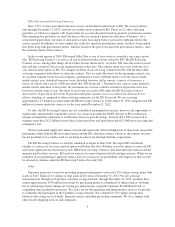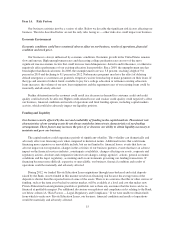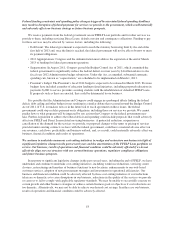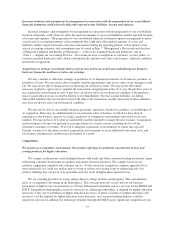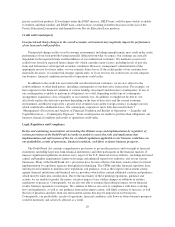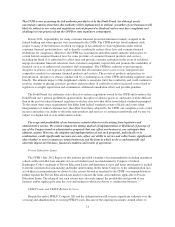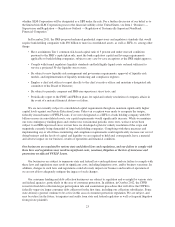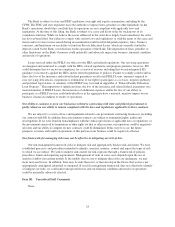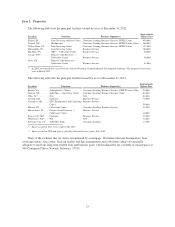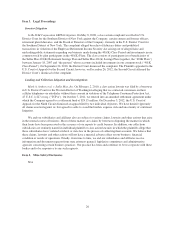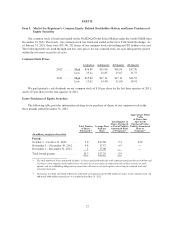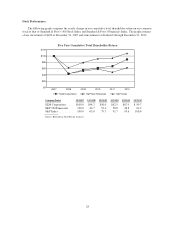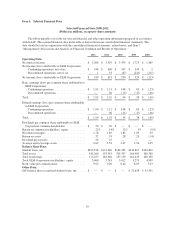Sallie Mae 2012 Annual Report Download - page 21
Download and view the complete annual report
Please find page 21 of the 2012 Sallie Mae annual report below. You can navigate through the pages in the report by either clicking on the pages listed below, or by using the keyword search tool below to find specific information within the annual report.Incorrect estimates and assumptions by management in connection with the preparation of our consolidated
financial statements could adversely affect the reported assets, liabilities, income and expenses.
Incorrect estimates and assumptions by management in connection with the preparation of our consolidated
financial statements could adversely affect the reported amounts of assets and liabilities and the reported amounts
of income and expenses. The preparation of our consolidated financial statements requires management to make
certain critical accounting estimates and assumptions that could affect the reported amounts of assets and
liabilities and the reported amounts of income and expense during the reporting periods. A description of our
critical accounting estimates and assumptions may be found in Item 7 “Management’s Discussion and Analysis
of Financial Condition and Results of Operations — Critical Accounting Policies and Estimates” and in
“Note 2 — Significant Accounting Policies.” If we make incorrect assumptions or estimates, we may under- or
overstate reported financial results, which could materially and adversely affect our business, financial condition
and results of operations.
Acquisitions or strategic investments that we pursue may not be successful and could disrupt our business,
harm our financial condition or reduce our earnings.
We may consider or undertake strategic acquisitions of, or material investments in, businesses, products, or
portfolios of loans. We may not be able to identify suitable opportunities and, if not, some of our strategies could
fail. We may not be able to obtain necessary financing on satisfactory terms. We may not be able obtain
necessary regulatory approvals or complete the transactions on appropriate terms. If we pay the purchase price of
any acquisition or investment in cash, it may have an adverse effect on our financial condition; if the purchase
price is paid with our stock, it could be dilutive to our shareholders. We may assume liabilities, including
unrecorded liabilities that are not discovered at the time of the transaction, and the repayment of those liabilities
may have an adverse effect on our financial condition.
We may not be able to successfully integrate personnel, operations, businesses, products, or technologies of
an acquisition. There may be additional risks if we enter into a line of business in which we have limited
experience or the business operates in a legal, regulatory or competitive environment with which we are not
familiar. We may not have or be able to maintain the expertise needed to manage the new business. Acquisitions
and investments also may not perform to our expectations for various reasons, including the loss of key
personnel, customers or vendors. If we fail to integrate acquisitions or investments or realize the expected
benefits, we may lose the return on these acquisitions or investments or incur additional transaction costs, and
our business and financial condition may be harmed as a result.
Competition
We operate in a competitive environment. Our product offerings are primarily concentrated in loan and
savings products for higher education.
We compete in the private credit lending business with banks and other consumer lending institutions, many
with strong consumer brand name recognition and greater financial resources. We compete based on our
products, origination capability and customer service. To the extent our competitors compete aggressively or
more effectively, we could lose market share to them or subject our existing loans to refinancing risk. Our
product offerings may not prove to be profitable and may result in higher than expected losses.
We are a leading provider of saving- and paying-for-college products and programs. This concentration
gives us a competitive advantage in the marketplace. This concentration also creates risks in our business,
particularly in light of our concentrations as a Private Education Loan lender and as a servicer for the FFELP and
DSLP. If population demographics result in a decrease in college-age individuals, if demand for higher education
decreases, if the cost of attendance of higher education decreases, if public resistance to higher education costs
increases, or if the demand for higher education loans decreases, our consumer lending business could be
negatively affected. In addition, the federal government, through the DSLP, poses significant competition to our
19


